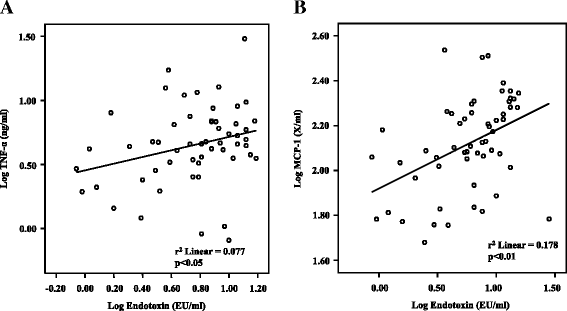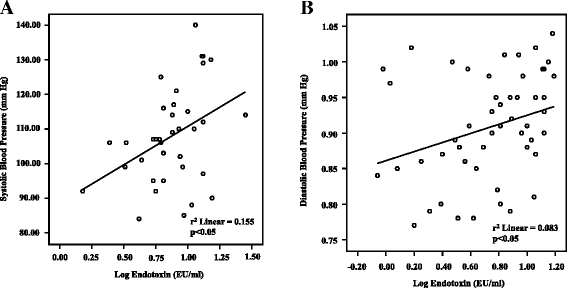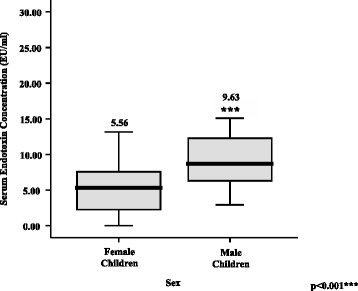Metabolic endotoxaemia in childhood obesity
- PMID: 26819711
- PMCID: PMC4728817
- DOI: 10.1186/s40608-016-0083-7
Metabolic endotoxaemia in childhood obesity
Abstract
Background: Childhood obesity is associated with chronic low-grade inflammation considered as a precursor to metabolic disease; however, the underlying mechanisms for this remain unclear. Studies in adults have implicated gut derived gram-negative bacterial fragments known as lipopolysaccharide or endotoxin, activating the inflammatory response, whilst the importance in childhood obesity is unclear. The aim of this research is to understand the relationship between circulating endotoxin in childhood obesity, and its' association with inflammatory and cardiovascular (CV) injury biomarkers.
Methods: Fasted blood was obtained from children with varying degrees of obesity (age: 13.9 ± 2.3Yr; BMI: 35.1 ± 5.2 Kg/m(2); n = 60). Multiplex CVD biomarker immunoassays were used to determine systemic levels of inflammatory and vascular injury biomarkers, such as tumour necrosis factor-α (TNF-α), interleukin (IL-) 1β, 6, 8 and 10, plasminogen activator inhibitor-1 (PAI-1), soluble intercellular adhesion molecule type-1 (sICAM-1), matrix metalloproteinase-9 (MMP-9), myeloperoxidase (MPO) and vascular endothelial growth factor (VEGF) as well as endotoxin levels.
Results: Endotoxin levels demonstrated a significant and positive correlation with the markers for inflammation, vascular injury and atherogenesis (TNF-α: r(2) = 0.077, p < 0.05; PAI-1: r(2) = 0.215, p < 0.01; sICAM-1: r(2) = 0.159, p < 0.01; MMP-9: r(2) = 0.159, p < 0.01; MPO: r(2) = 0.07, p < 0.05; VEGF: r(2) = 0.161, p < 0.01). Males demonstrated significantly higher circulating endotoxin than females (Males: 9.63 ± 5.34 EU/ml; p = 0.004; Females: 5.56 ± 4.06 EU/ml; n = 60) in these BMI and age-matched cohorts.
Conclusion: The present study demonstrates for the first time a significant association between circulating endotoxin and biomarkers of metabolic risk in children as young as 11 years. Thus, endotoxin-mediated sub-clinical inflammation during childhood obesity may be a key contributor to T2DM and CVD development later in life.
Keywords: Cardiovascular injury markers; Childhood obesity; Endotoxin; Insulin resistance.
Figures




References
-
- Jankovic N, Geelen A, Streppel MT, de Groot LC, Kiefte-de Jong JC, Orfanos P, et al. WHO guidelines for a healthy diet and mortality from cardiovascular disease in European and American elderly: the CHANCES project. Am J Clin Nutr. 2015;102(4):745–56. doi: 10.3945/ajcn.114.095117. - DOI - PMC - PubMed
LinkOut - more resources
Full Text Sources
Other Literature Sources
Research Materials
Miscellaneous

